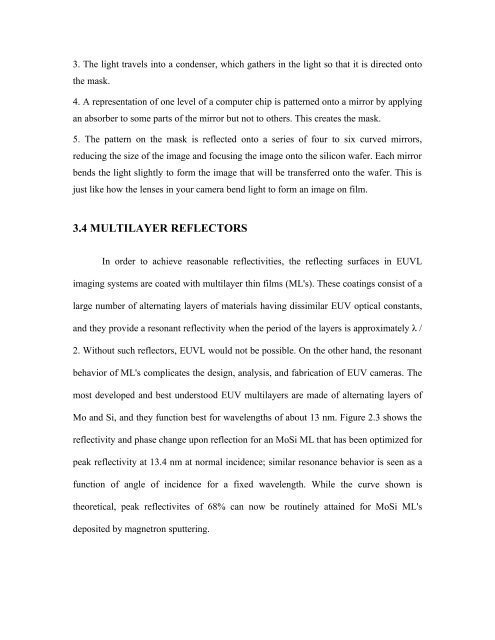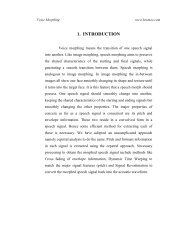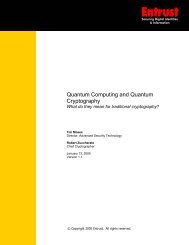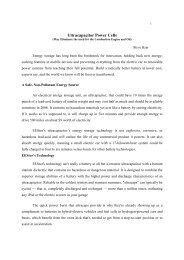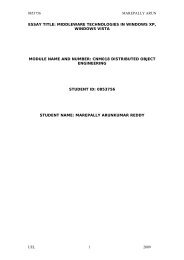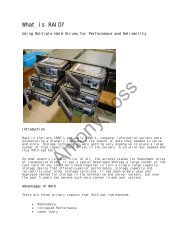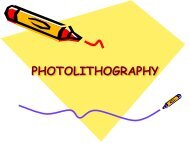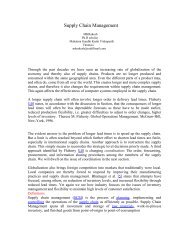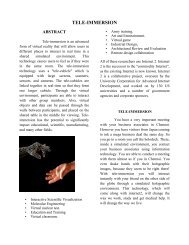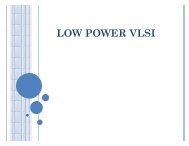Photo Lithography.ppt - 123SeminarsOnly
Photo Lithography.ppt - 123SeminarsOnly
Photo Lithography.ppt - 123SeminarsOnly
You also want an ePaper? Increase the reach of your titles
YUMPU automatically turns print PDFs into web optimized ePapers that Google loves.
3. The light travels into a condenser, which gathers in the light so that it is directed onto<br />
the mask.<br />
4. A representation of one level of a computer chip is patterned onto a mirror by applying<br />
an absorber to some parts of the mirror but not to others. This creates the mask.<br />
5. The pattern on the mask is reflected onto a series of four to six curved mirrors,<br />
reducing the size of the image and focusing the image onto the silicon wafer. Each mirror<br />
bends the light slightly to form the image that will be transferred onto the wafer. This is<br />
just like how the lenses in your camera bend light to form an image on film.<br />
3.4 MULTILAYER REFLECTORS<br />
In order to achieve reasonable reflectivities, the reflecting surfaces in EUVL<br />
imaging systems are coated with multilayer thin films (ML's). These coatings consist of a<br />
large number of alternating layers of materials having dissimilar EUV optical constants,<br />
and they provide a resonant reflectivity when the period of the layers is approximately λ /<br />
2. Without such reflectors, EUVL would not be possible. On the other hand, the resonant<br />
behavior of ML's complicates the design, analysis, and fabrication of EUV cameras. The<br />
most developed and best understood EUV multilayers are made of alternating layers of<br />
Mo and Si, and they function best for wavelengths of about 13 nm. Figure 2.3 shows the<br />
reflectivity and phase change upon reflection for an MoSi ML that has been optimized for<br />
peak reflectivity at 13.4 nm at normal incidence; similar resonance behavior is seen as a<br />
function of angle of incidence for a fixed wavelength. While the curve shown is<br />
theoretical, peak reflectivites of 68% can now be routinely attained for MoSi ML's<br />
deposited by magnetron sputtering.


